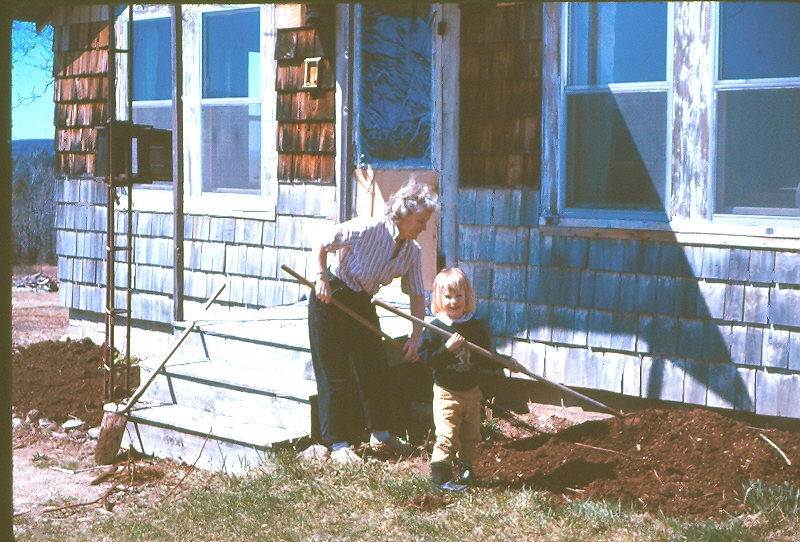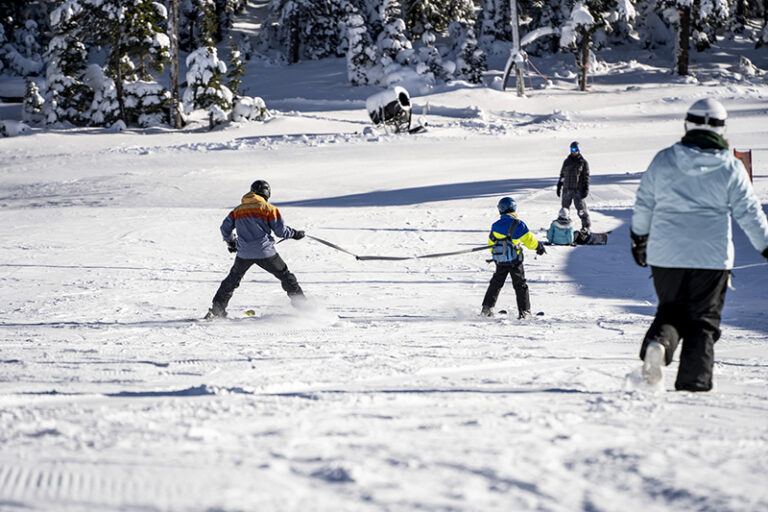We garden out of a love for heritage. My husband and I are archeologists. He grew up with Polish parents, going to a Polish church in upstate New York, weeding a Polish-American garden, and picking mulberries. I grew up in rural New England, learning about farming from my French-Canadian mother and my Scottish-descent father—not to mention my grandparents, my great-grandparents, and a bustling family of many cousins, aunts, and uncles.

Against the backdrop of childhood, my grandparents grew dried beans. I remember plunging my hands into a 15 gallon galvanized metal stock tub heavy with dried beans. Gramp just knew them as “Uncle John’s beans,” because he got them from his older brother John, who got them from someone else, who may have gotten them from the agricultural experiment station at the University of New Hampshire.
Those dried beans of my childhood were dark maroon, speckled with pink, and plump. They made mouth-watering New England maple baked beans cooked by either Grammy or Mom, in cast iron pots simmering all day on wood stoves. The beans joined brown bread baked in cans, still hot when we clomped in, wet and hungry, from a day in the sugar woods.
Years later, the memory of those long-gone dried beans became my gateway to seed saving. Trying to discover what the beans were a little too late, I grew out beans with names like “Low’s Champion,” “King of The Early,” “Jacob’s Cattle,” and “Vermont Cranberry” from old-fashioned catalogs like Pinetree Seeds, High Mowing, and Seed Saver’s Exchange. I loved the idea of New England’s “Bean Man,” John Earl Withee, Jr. In his later years, Withee went on to donate his 1,186 bean collection of New England’s bean biodiversity to the nonprofit Seed Saver’s Exchange (SSE) in Decorah, Iowa.

What many don’t know is that SSE networks hundreds of seed savers around the globe through its annual “member’s only” yearbook. My husband and I joined and started sending for seeds like Biały (Polish for white) Carrots from a seed saver in Sweden, Tyborski Plum tomatoes from a defunct land grant agricultural experiment station in the Midwest, Polish fava beans, and Jaune du Poitou leeks from William Woys Weaver, author of Heirloom Vegetables.
We dabbled in brightly colored carrots, dozens of tomatoes, and raised beds. As archeologists we were on a quest to recreate our genealogical roots by growing interesting vegetables and fruits. We discovered white vegetables were historically prized in Poland because the ability to keep a dish light colored as it cooked on the wood stove demonstrated exceptional domestic talent.

We never did find the heirloom bean varietal from my childhood because our family became distracted with a move to Spokane, new jobs as archeologists for a federal agency and tribe, and new ground to garden and explore. We went on to plant Inchelium Red garlic, Long Island Cheese Pumpkins, and the same Scottish Bere Barley that David Thompson would have thrown down on promising river edges while exploring the Northwest. One day, it dawned on us that we might be one of the last two growers of Tyborski Plum tomatoes left anywhere in the world.
To encounter or learn more about our heirloom vegetables from the past, drop by Illinois Ave Urban Farm Stand at 1817 E. Illinois Ave. in Spokane. We are open by chance or appointment, (509 328-2523), especially on sunny days in the summer when the farm stand umbrella is out in the driveway. Our heritage is a seed to a sustainable future.
Written by Kathleen E. Callum













